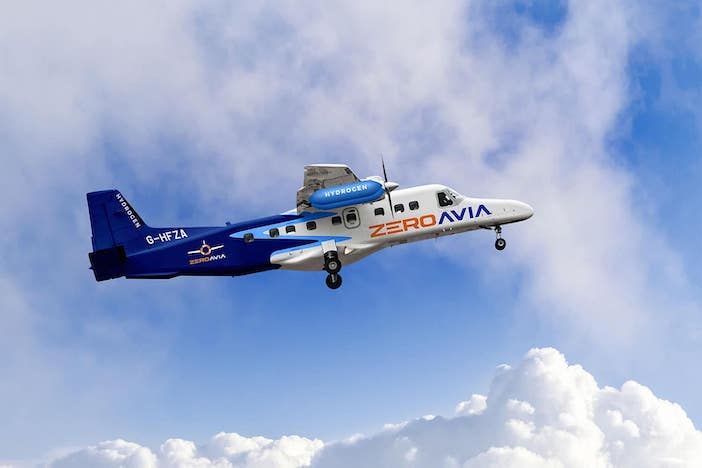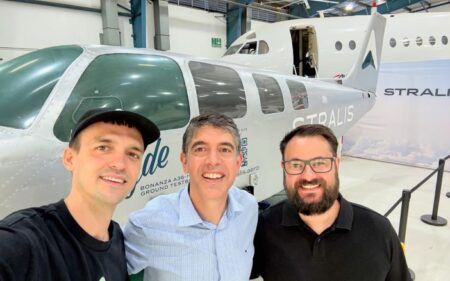Hydrogen-aircraft developer ZeroAvia has obtained a second twin-engine Dornier 228 to use as a testbed for systems and components as it ramps up its testing and development program.
The19-seat Dornier 228, which was delivered to ZeroAvia’s headquarters in Hollister, California last week will use a hydrogen fuel cell propulsion system that is being developed in the UK as part of the UK Government-funded HyFlyer II project.
The testbed aircraft will be used to test components, system integrations and for demonstrations to the FAA. ZeroAvia plans to certify its ZA-600 hydrogen powertrain with the FAA in 2024.
Val Miftakhov, CEO and founder of ZeroAvia said, “This new project in California will allow us to use architectures from our Hyflyer II initiative, where we are working with the same aircraft, and apply those lessons as we further test and demonstrate the system across a number of different use cases.
“Ultimately, this will help us optimize our zero-emission powertrain design ahead of certification. This year we will have two demonstration aircraft flying on two continents powered by our hydrogen-electric powertrains which will further help us secure partner and customer commitments across the worldwide aviation industry.”
ZeroAvia’s testbed aircraft will use a hydrogen-electric powertrain and a conventional engine. The company plans to supply various hydrogen-electric conversion kits for existing aircraft after certifying the ZA-6000 powertrain and already has an agreement in place with Alaska Airlines.
The company expects to modify the new Dornier 228 for test flights within four months. A flight testing and demonstration program will then commence that includes passenger, cargo, and industrial use cases with several partners that are yet to be announced.
Last fall, ZeroAvia conducted the first ground test of its HyFlyer II program and successfully tested the 600kW ZA-600 powertrain with its 15-ton HyperTruck mobile ground testing platform last August. The HyperTruck, based on heavy-duty military trucks, is sized to also support testing of the company’s larger planned powertrain, the ZA-2000, which has a shaft power over 1.8MW intended for use in 40-80 seat aircraft.
ZeroAvia expects to employ another 50 staff at its site in Hollister Municipal Airport, which it is expanding with a new 15,000 square foot hangar to accommodate the flight-testing program. The company said the expansion gives it space to conduct engineering work on the aircraft and for its HyperTruck test bed platform, as well as extra office space.
Meanwhile, the company has also revealed this week what it believes is Europe’s first landside-to-airside hydrogen airport pipeline at its base at Cotswold Airport in the UK. The 100m long hydrogen pipeline runs alongside ZeroAvia’s hangar at the Airport.
The pipeline will be used alongside an electrolyzer and mobile refueler to use low-carbon hydrogen for its test flight program.
Arnab Chatterjee, vice president of infrastructure at ZeroAvia said, “Hydrogen-electric aviation is the only practical, holistic, and economically attractive solution to aviation’s growing climate change impact. Fuel provision needs to be economical and convenient for airlines to achieve operational cost benefits
Related stories
ZeroAvia to move hydrogen aircraft flight testing forward with Dornier 228s





